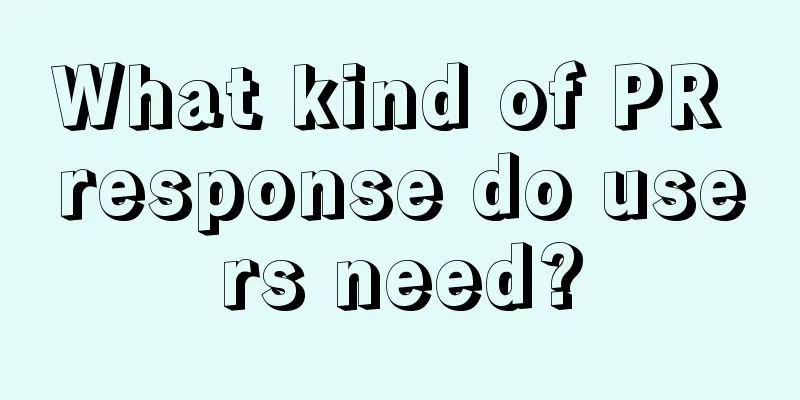What is strategy? The four core elements of business analysis!

When doing business analysis, we often list a bunch of year-on-year and month-on-month changes in revenue, cost, and expenses, but we can't see the problem. Leaders always hope that business analysis can make strategic suggestions, but what is strategy? And how to make suggestions? Today, I will give you a systematic solution. Common Mistakes "Keeping a running account" is the most common mistake in business analysis. When making a report: 1. List the income, cost, expenses and other indicators 2. Each indicator has this month/cumulative/year-on-year/month-on-month/time progress ratio/KPI completion ratio 3. Each indicator should be divided into customers/products/cities... The resulting form is as shown below, often up to 80 to 100 pages of PPT It is difficult to interpret the business meaning in this way, because there are too many boxes. Often, by the time I reach page 30, I have forgotten what I wrote on page 1. Moreover, if you separate the income, costs, and expenses into tables, it is easy to come up with something like: income is too low, we need to increase it. This kind of nonsense literature does not provide any effective suggestions. To solve the problem, we obviously cannot separate the indicators into pieces, but should observe them as a whole, because the business strategy of the enterprise is hidden behind the combination of these indicators. 1. Understand the essence of businessEveryone dreams of having a business with high revenue, low cost, low expenses, and extremely high profits. But in reality, this is very difficult to achieve. High revenue and low cost mean a huge space for premium. At this time, consumers will find it too expensive, and competitors will rush in to fight a price war until the gross profit margin is reduced to a normal level. Unless the business has:
There are examples of the above three types in reality, and you can even guess who they are. In short, they are not ordinary companies. The simple principle of "you get what you pay for" also applies to business operations. For ordinary companies, there is no such thing as high income and high profits out of thin air. If you want to get high profits, you must pay a price in terms of costs/expenses, etc., such as: 1. Huge marketing investment → high sales expenses → strong channel promotion 2. Huge R&D investment → High R&D expenses → Competitive products 3. Strong cost control → lower unit cost → competitive price 4. Manage capital security → Control inventory levels/avoid receivables backlog → Reject inferior products/customers Therefore, when making an operating analysis report, you should first put together indicators such as revenue, gross profit margin, expense rate, accounts receivable, and inventory. The combination of these indicators + comparison with the industry level/main competitor data can depict the company's operating strategy. Therefore, it is recommended to make a summary before the operating analysis report and put the key data together (as shown in the following table): 2. Discovering Strategy ProblemsWhen the data is combined, it is easier to find problems, especially when the business strategy is missing, too much focus on sales, and ignore other indicators. For example:
As shown in the figure below. If you find similar problems in your company, please point out: "There is a deviation in our business strategy" to attract the attention of management and correct the problem in time. 3. Find the strategic focusWhen the data is combined, it will be easier to see the key points of the strategy. For example, the common ones are: 1. Marketing-driven strategy: high gross profit + high sales expenses, with a focus on channels 2. R&D-driven strategy: high gross profit + high R&D expenses, products have high-threshold patents/functional advantages 3. Cost-driven strategy: low gross profit + large scale + low unit cost, winning through economies of scale Reflected in the financial statements, they all have fixed forms, which can be seen through combined indicators. Once the main strategy is selected, the focus of subsequent business analysis will be very clear. For example, if a company chooses a marketing-driven strategy, it must ensure that: 1. Marketing expenses brought growth 2. Control investment without direct benefits 3. Monitor the incremental effect of each channel Accordingly, brands with no direct effect can be distinguished, and business indicators representing their input and output can be summarized according to their online/offline characteristics, thus forming a specific monitoring report (as shown below) For example, if a company chooses a R&D-driven strategy, it must ensure that: 1. The new product has better hardware performance than its competitors 2. New products are superior to competing products in terms of user experience 3. The sales volume of new products after they are launched is enough to replace the main products of the previous generation 4. Control discounts for new products to avoid covering up product problems by lowering prices Of course, in the past 2024, there is also an atypical but useful strategy, which is the contraction strategy. When the overall environment is not good, lower the sales growth target, and at the same time significantly reduce the cost investment, drastically cut ineffective marketing investment/cut unprofitable product lines. Giving up revenue growth in favor of profit is also a way to cope with the economic downturn. 4. Problems of exposing strategy gapsSome students will say: Teacher, our company does not have any business strategy: 1. Goals are all thought out and then pulled to the limit 2. Each department will set a goal based on last year’s results. 3. There is no so-called key product or key channel, and the strength is averagely used This is a common problem in low-level management companies. If this is true, then you will encounter: 1. Product line has no focus: There are many products of the same style/same price, competing with themselves for business 2. Customers are not focused: discounts are given when customers are met, repeat purchases are not guaranteed, and the more orders are signed, the lower the gross profit 3. Marketing has no focus: a large number of projects cannot prove their value, and channels with low investment-to-production ratios exist for a long time At this point, you can select the exposure issue first and then guide the solution. |
<<: When a large number of North Americans flock to Xiaohongshu...
>>: Master these 15 marketing strategies to make your sales soar
Recommend
How is your private domain sales during the 2023 Spring Festival?
Data released by major platforms and official medi...
Entrepreneurs’ sense of rhythm and relaxation
An entrepreneur gives some advice to his juniors a...
How to start cross-border e-commerce? How to start cross-border e-commerce?
Cross-border e-commerce provides new opportunities...
How does Amazon deliver goods by itself? How does it work?
Amazon has three delivery methods: overseas wareho...
How much is the recharge fee for Wish? How can I pay with Wish?
Wish is a cross-border e-commerce platform headqua...
20 million fans can’t sell products, what’s the problem?
Since the popularity of drama accounts such as &qu...
How to set up Amazon video ads? How to play with ads?
We all know that compared with print ads, video ad...
What does Amazon KYC audit mean? What are the audit requirements?
Merchants who open stores on Amazon sometimes enco...
500,000 fans, monthly GMV exceeds 350 million, a new dark horse emerges in the apparel market
This article takes the successful experience of th...
Ali is starting to get twisted
Recently, Alibaba has made many updates to Taobao,...
McDonald’s is entering the skit industry. Do restaurant brands need to follow suit?
McDonald's launched the brand's first self...
The boss asked why the data fluctuated abnormally and how to analyze it!
This article analyzes how to accurately judge data...
With subsidies and traffic, Douyin and Kuaishou have increased their graphic and text content. Are new opportunities coming?
The promotion of goods with pictures and texts is ...
If B station cancels the display of playback volume, will it make UP hosts who do things for love no longer worry about money?
Bilibili announced that it will use the number of ...
How does Shopee deliver goods? What are the delivery procedures?
Many friends will open stores on cross-border e-co...









